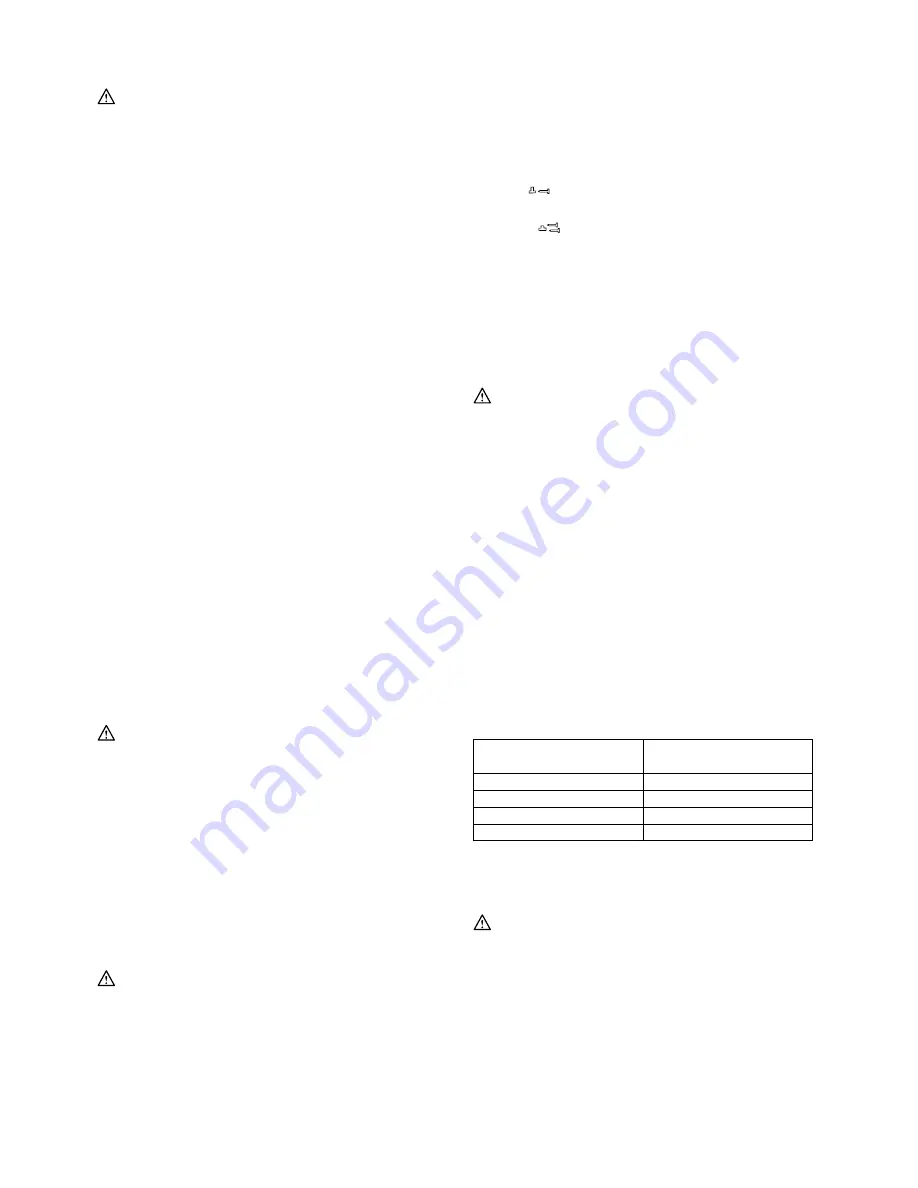
8
Loading the nailer
CAUTION:
•
Make sure that the coil support plate is set to the
correct step for used nails.
Fig.8
Disconnect the air hose from the tool. Select nails
suitable for your work. Depress the latch lever and open
the door and magazine cap.
Select nails suitable for your work. Depress the latch
lever and open the magazine cap.
Lift and turn the coil support plate so that the arrow with
nail size indicated on the coil support plate will point to
the corresponding graduation increment marked on the
magazine. If the tool is operated with the coil support
plate set to the wrong step, poor nail feed or malfunction
of the tool may result.
Fig.9
Place the nail coil over the coil support plate. Uncoil
enough nails to reach the feed claw. Place the first nail in
the driver channel and the second nail in the feed claw.
Place other uncoiled nails on feeder body. Close the
magazine cap slowry until it lock after checking to see
that the nail coil is set properly in the magazine.
Fig.10
Connecting air hose
Slip the air socket of the air hose onto the air fitting on
the nailer. Be sure that the air socket locks firmly into
position when installed onto the air fitting. A hose
coupling must be installed on or near the tool in such a
way that the pressure reservoir will discharge at the time
the air supply coupling is disconnected.
OPERATION
CAUTION:
•
Make sure all safety systems are in working order
before operation.
1.
To drive a nail, you may place the contact element
against the workpiece and pull the trigger, or
Fig.11
Fig.12
2. Pull the trigger first and then place the contact
element against the workpiece.
•
No. (1) method is for intermittent nailing, when you
wish to drive a nail carefully and very accurately.
No. (2) method is for continuous nailing.
CAUTION:
•
However when the tool is set to the "Intermittent
Nailing" mode, WITH THE TRIGGER HELD IN A
HALF-PULLED POSITION, an unexpected nailing
could occur, if contact element is allowed to
re-contact against the workpiece or the other
surface under the influence of recoil.
In order to avoid this unexpected nailing, perform
as follows;
−
A. Do not place the contact element against the
workpiece with excessive force.
−
B. Pull the trigger fully and hold it on for 1-2
seconds after nailing.
•
For No. (1) method, set the change lever to
the
position.
For No. (2) method, set the change lever to
the
position.
After using the change lever to change the nailing
method, always make sure that the change lever is
properly set to the position for the desired nailing
method.
Fig.13
Fig.14
Nailing of steel plate
WARNING:
•
Use 2.3 mm or les steel for C-shaped one.
The tool will bounce severely and a nail struck
back, causing serious injuries.
•
Use hardened nails only for steel plate.
Using other purposed nails may cause serious
injuries.
•
When nailing, hold the tool so that it stands upright
to the driving surface.
Slanted nailing may cause nails to strike back,
causing serious injuries.
•
When fastening a corrugated zinc plate on the
C-shaped steel, use 0.7 mm or less thick plate and
32 mm long hardened nails. Failure to do so may
cause nails to strike back, causing serious injuries.
•
Do not use the tool for nailing on ceiling or roof.
Choose and use nails more than 10 mm longer than total
thickness of all workpiece to be fastened by referring to
the table below.
1
.
8
-
22
10
-
27
1
5-
30
1
5-
38
32
38
45
5
0
Mater
i
a
l
th
i
c
k
nes
(mm)
N
a
il l
ength
(mm)
009186
Fig.15
Fig.16
CAUTION:
•
Depending on the hardness and total thickness of
all workpiece in combination to be fastened,
enough fastening may not be obtained. Nailing on
steel plate to excessive depth may extremely
reduce the fastening force. Before nailing, adjust
the nailing depth properly.
•
In the nailing on the steel plate, the driver may be
clogged due to susceptibility to wear. When it is
worn, sharpen it or replace it with a new one.
Summary of Contents for AN610H
Page 62: ...62 ...
Page 63: ...63 ...
Page 64: ...64 Makita Corporation Anjo Aichi Japan 884844B977 ...







































